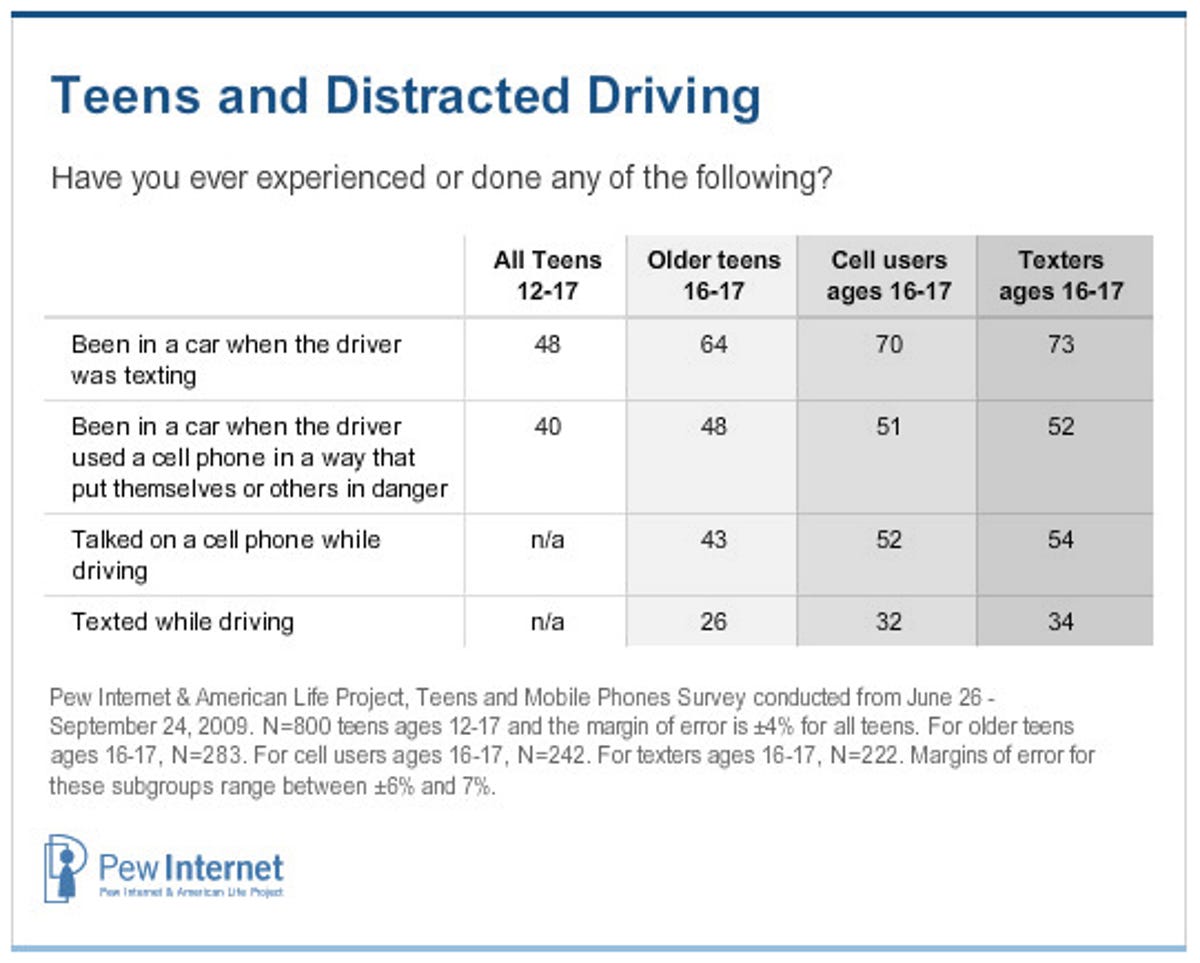Despite increased publicity over the dangers of texting while driving, many teenagers (like many adults) have yet to get the message.
A third of cell phone users aged 16 and 17 admitted to texting while driving, according to focus groups and a report released Monday by Pew Research. For the report, “Teens and Distracted Driving,” Pew surveyed 800 kids aged 12 to 17 about their cell phone use in the car. Teens 16 and 17 years old were asked about their role as drivers, while younger ones were questioned about their experiences as passengers.
Of all teens surveyed, 75 percent said they own a cell phone and 66 percent of those text. Half of teens 16 and 17 who own a cell phone said they’ve talked on the phone while driving.
Among passengers, 48 percent of teens 12 to 17 said they’ve been in a car while the driver was texting, and 40 percent have been in a car when the driver used a cell phone in a way that put everyone in danger.
Though some teen drivers said they only text at a red light or will hand the phone over to a passenger to text, others didn’t seem to care about the risk.
Pew found one high school boy who said he thinks texting while driving is “fine,” adding, “I wear sunglasses so the cops don’t see [my eyes looking down].” A high-school girl admitted that she texts “all the time,” and that “everybody texts while they drive…like when I’m driving by myself I’ll call people or text them cause I get bored.”


Pew Research
Many teens expressed concern about being in a car while the driver is talking or texting on a cell phone, noted Pew. But in several cases, the driver was the teen’s parent.
“I am concerned because when my mom drives she talks on the phone a lot so she is still alert but she can get kind of dangerous,” reported one young teen. Another boy said, “Yeah [my dad] drives like he’s drunk. His phone is just like sitting right in front of his face, and he puts his knees on the bottom of the steering wheel and tries to text.”
This latest Pew research confirms a deluge of other studies about the dangers of cell phone use while driving. One study by the VirginiaTech Transportation Institutefound that truck drivers who texted were 23 times more at risk of a “crash or near crash event” than “nondistracted driving.”
A Vlingo survey from May discovered that 26 percent of mobile phone users said they texted while driving. A test conducted by Car and Driver magazine showed dramatically slower reaction times by two drivers who tried to brake while texting.
Early Pew research from 2006 (before texting became widespread) found a quarter of adult cell phone owners felt that using their phone compromised their ability to drive.
Certain states, such as California, Connecticut, and Oregon have passed laws banning texting or talking on a mobile phone while driving. The U.S. Senate is currently looking at a bill that would give federal dollars to other states who pass similar laws.
In late September, Transportation Secretary Ray LaHood held a summit to discuss the issue of distracted driving. Around that time, President Obama signed an executive order banning federal workers from texting while driving.
Pew’s Internet & American Life Project conducted its survey of 800 teens last summer. Pew and the University of Michigan also held nine focus groups with teens 12 to 18 between June and October to discuss the issue of driving and cell phones. Pew’s results included the findings from both the survey and focus groups.



